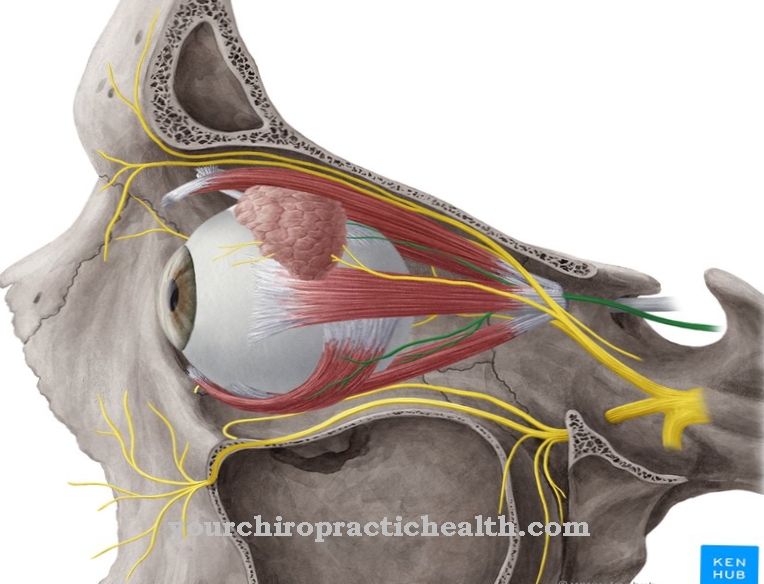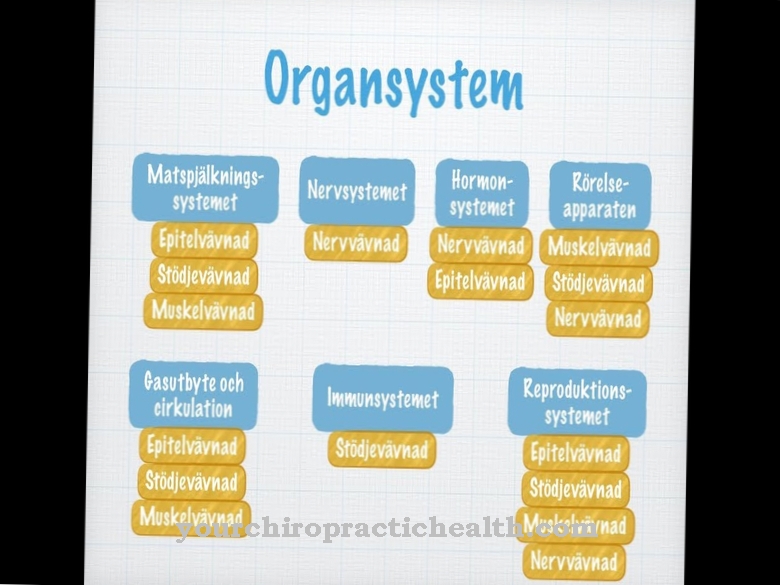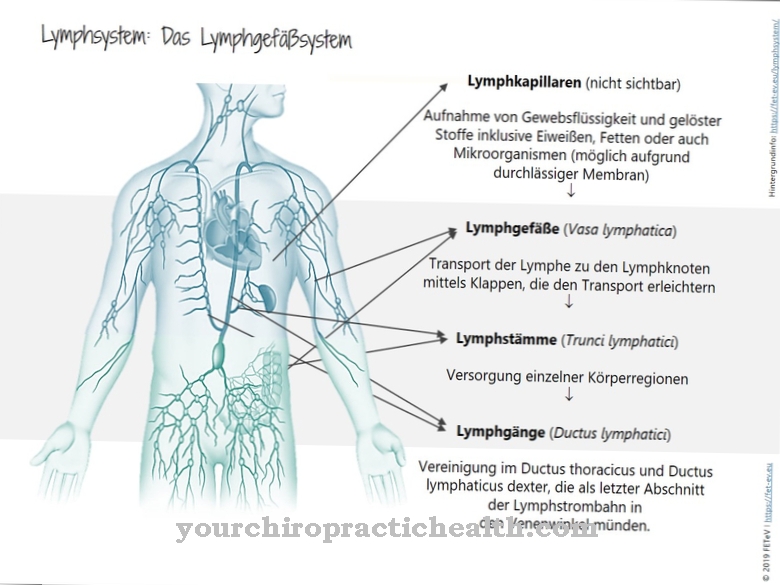Of the Phrenic nerve is a mixed nerve that motor innervates the diaphragm. The nerve is thus involved in breathing. Complete paralysis of the structure is life threatening.
What is the phrenic nerve?
The plexus cervicalis is used to describe the nerve plexus in the neck area. The nerve structure contains both motor and sensitive branches. The motor branches of the structure reach the ventral neck muscles, infrahyric muscles, and the diaphragm.
The phrenic nerve is one of the branches of the cervical plexus and arises from the cervical plexus. It is a motor peripheral nerve that contains fibers from spinal cord segments C3 and C4. The nerve also contains parts of the spinal cord segment C5. In a fifth of all people, so-called secondary phrenic diseases occur in the neck area in addition to the main branch. The main branch of the phrenic nerve innervates the diaphragm in particular and is therefore also called Diaphragmatic nerve known.
The nerve is a mixed nerve that contains sensory fibers in addition to the motor fibers. The diaphragm is the only area that the nerve supplies by motor. Some internal organs belong to the sensitive supply area of the nerve.
Anatomy & structure
The phrenic nerve arises from the cervical plexus and runs between the subclavian artery and subclavian vein. The nerve stretches on the anterior scalene muscle in the caudal direction and migrates in the mediastinum on the ventral side of the peduncle between the parietal pleura and the outer pericardium to the diaphragm, the caudal and cranial side of which the nerve covers with its branches.
When it arrives at the diaphragm, the phrenic nerve gives off two secondary branches, known as the ramus phrenicoabdominalis dexter and phrenicoabdominalis sinister, which penetrate the diaphragm. In addition, the rami in the abdominal area innervate the parietal peritoneum under the diaphragm. The Ramus phrenicoabdominalis dexter traverses the foramen venae cavae from here. The left ramus phrenicoabdominalis runs through muscle fibers of the diaphragm. The phrenic nerve essentially runs through the thoracic aperture, the pleural dome, the pericardium and the diaphragm, its branches penetrating into the abdominal cavity and thus reaching the liver, pancreas and abdominal wall.
Function & tasks
The phrenic nerve is a mixed nerve. So he has different tasks. Motorically, it innervates only the diaphragm and thus the central respiratory muscle. In this context, the nerve plays a key role in the movement of breath. The diaphragm is subject to central nervous control by the respiratory center within the medulla oblongata and the pons.
The nerve cell associations in these brain areas control the motor root cells from the phrenic nerve, which are located in the cervical cord. The phrenic nerve is involved in the involuntary control of the diaphragm by the respiratory center and in this way ensures the automatism of the vital respiratory movements. The diaphragm has a dome shape. The contraction of the muscles by the phrenic nerve takes place automatically via the assigned spinal cord segments. The individual segments project onto the breathing center. With the phrenic-mediated contraction of the diaphragm muscles, the thoracic space increases.
Due to the adhesions of the diaphragm and parietal pleura, the muscle contraction also leads to an increase in the volume of the lungs. The resulting negative pressure lets people breathe in automatically. In addition, the phrenic-mediated diaphragm contraction plays a role for the abdominal press, as it is relevant for the birth process, for example. Apart from these functions, the phrenic nerve also has tasks in the area of sensitive innervation.
The sensitive supply areas of the nerve are the parietal pleura in the form of the mediastinal and diaphragmatic pars, the pericardium and the peritoneum, especially that of the liver or gallbladder and the stomach entrance. The phrenic nerve is present on both sides of the human body and takes on the tasks mentioned on both sides.
You can find your medication here
➔ Medicines for heartburn and bloatingDiseases
Like any other nerve, the phrenic nerve can be affected by irritation and paralysis. A confusion of the nerve can, for example, be the result of an operative opening of the pericardium. If parts of the sensitive supply areas are irritated, the resulting pain often radiates into the right shoulder.
This phenomenon is known as the Eiselsberg phenomenon. The nerve is often irritated during a gas-based laparoscopy. The patients then complain of chest and shoulder pain. During the procedure, the gas exerts pressure on the diaphragm area, thereby irritating the nerve. Pleurisy in the sense of pleurisy can also cause nerve irritation and in this case is often associated with hiccups. The symptoms of phrenic paralysis are far more serious. In such a paralysis, the diaphragm slackens on one side. The abdominal organs are no longer pressed down by the diaphragm and press upwards when they relax.
The result is an elevated diaphragm, which causes more or less severe breathing difficulties. Unilateral elevated diaphragm are not life threatening. The bilateral failure of the phrenic nerve can be fatal. The phrenic nerve is usually not affected by symptoms such as paraplegia from the fifth cervical vertebra. Only with deformations up to the third cervical vertebra are massive and life-threatening disorders of the lung function to be expected.
A complete failure of the phrenic nerve is usually traumatic. Neurological diseases rarely lead to complete paralysis of the nerve. The exception is ALS, which gradually breaks down the motor cranial nerve nuclei and leads to failure of the respiratory muscle culture.



























